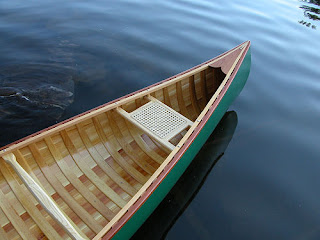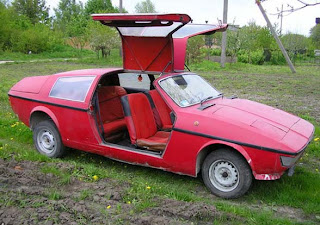As we as a species hurdle forward into time, fashions move like a wave, or series of waves. From fad to faux pas, every concoction of a garment has been in style at least once. And the list of things that have fallen out of favor is exponentially larger. And while some items are merely disliked, such as bell-bottoms, others will downright provoke an attack.
 |
| Pendulum Wave Series |
Fur is not only unpopular, but may land you splashed with red paint by a fervent activist (no pun intended); coat rendered unrepairable. Which is a terrible waste, considering animals died for its creation. But what we may not remember, or may not realize, is that the fur coat now dripping in candy-apple latex has a deeper, more interesting role in history than simply being draped over Kim Cattrall as she saunters down some red carpet somewhere unimportant.
Americans tend to think of the Industrial Revolution as the real birth of this nation. Or more so as the part where things get interesting. In our minds the computer sitting on the desk in front of us right now was born out of those first hulking steam engines and inventors working by candle-light late into the night. American business as we know it was thrust through the loins of early machines; later wrung through corporate legislation and enough paperwork to dry the ocean. So the Industrial Revolution is where it all happened... or is it?
The Industrial Revolution was characterized by three major phases, or shifts that had to take place to allow it to take a step forward, and those phases were: Transportation being expanded, electricity becoming harnessed, and the refinement of industrial processes, tools and fuels. Obviously, each step can be covered in quite detail, but the first step is where we want to point our focus: Transportation.
This is where we jump back to that fur coat on Kim Cattrall. Before interstate highways, byways, streets, railroads and even dirt roads there was only really one way to get around, and really only a handful of people that knew this land front to back. The earliest fur traders were French explorers landing in (what is now) Canada in the 1500s. As an act of goodwill, they gifted local natives tea kettles, knives and the like, which prompted the natives to gift in exchange things they considered high in value, which were furs. And boy were they!
 |
| Early Fur Trader |
That single act set in motion the exploration of North America (by white men) and arguably laid the groundwork for the entire American Industrial Revolution. The French learned the fur trade routes and as the industry grew, fur became more scarce and traders pushed further west in search of more product. A hearty trade industry was also reason enough for many Europeans to take the plunge and move to the Americas. By the 1800s the Russians were trapping in Alaska and Lewis and Clark punched through the breadbasket and out to the Pacific. The transportation phase had reached the first checkpoint. However, it wasn't easy to get there. For all these explorers the paths were many but the vehicles few. Horses wouldn't be introduced to North America for some time (although the Conquistadors were shipping them to South America in the 15th and 16th centuries) so if you wanted to move around on land, you walked (and carried all your gear). The fastest way, bar far, to cover as much ground as necessary was by river and canoe.
 |
| The Route of Lewis & Clark |
In French Canada, the men who traversed these rugged routes (even as late as the 1960s) were known as The Voyageurs. Rugged men, sailors of sorts, but instead of canvas, masts and lines their conveyance was paddles and Freighter Canoes. 25 feet long and capable of portaging 15 men and thousands of pounds of gear, The Voyageurs paddle for up to 15 hours per day, for months on end. The short film of the same name is a must see.
The canoe is truly an organic form, it is the Occam's Razor of boats. There are as many different designs of canoe as there are bodies of water to paddle them on. Speaking in terms of denotation, all small, narrow, man powered vessels are canoes, even the things we refer to as "kayaks" are canoes (kayak being a closed canoe, as opposed to the ubiquitous summer-camp style which is an open canoe). Each boat has a different purpose, a different design and different construction. Personal preference plays the biggest role in choosing design, as well as the type of water it will be used on. Like many things, the canoe evolved as man's skill level and variety of materials available progressed.
 |
| A Dugout Canoe |
Primitive canoes were dugout style, carved out of one large log. Most of the hollowing was done by implementing fire to burn and clean out the interior, and it is likely that primitive hatchets were used to hone the final shapes. The oldest known canoe, The Canoe of Pesse, is a dugout, and dates back to about 8000 BC. As previously stated, as man, his tools, and his technique evolved, so did the canoe. The next style to come about was the birch bark canoe. Made mostly by hand and with simple tools this canoe was actually a giant leap forward from the design/build perspective. The canoe had evolved from a one-piece dugout to a multi-faceted design with many individual components that was drastically lighter and drastically more complicated, considering its construction involved the use of natural resins and turps and forming a two-dimensional sheet of tree bark into a three-dimensional contoured shape.
Up until the mid 1800s, there was no real canoe industry. Like many other things at the time, canoes were traded for other goods and services. But as the population grew, and birch bark became more scarce, new build methods were needed. As the machine age fired up, so did the minds of recently emigrated boat builders. Canvas was readily available, and cheap. It's uniform weave and ability to shrink when wet made it the ideal candidate for a material that could replace the birch tree. First used solely as a patch device on birch canoes, canvas soon replaced the thin bark as the shipwright's material of choice for construction.
 |
| Wood and Canvas Canoe in Progress |
 |
| Canvas Being Stretched Drum-Tight |
 |
| Tacking the Canvas in Place |
By 1878, a man named Evan H. Gerrish had perfected the canvas canoe and was making 18 of them per year in the first ever commercial canoe building enterprise. Based in Bangor, Maine, he was selling these canvas canoes for $25 apiece. Between 1888 and 1920, the Northeast exploded with canoe producers. Fueled by heightened demand, and aided by the ability to sell a much more reliable product, these new boat builders grew into the marketplace.
It wasn't until 1944 that the canoe would see another leap forward in design technology. Until that time, the Grumman Company had been making airplanes to fuel the war effort. But as the war came to an end, and demand for airplanes started to nosedive, Grumman set its sights on production efforts that would benefit everyday Americans. Having several airplanes that were made specifically to land in water, Grumman was poised with the materials, tooling, and design-oriented technology to mass-produce the first aluminum canoes. Aluminum as a build material was much lighter and stronger than the wood-based technology of the time. In spite of many drawbacks- aluminum canoes sink when capsized; are too noisy to facilitate hunting or wildlife watching; are cold in the winter and hot in the summer; have flat bottoms and slow lines; and are notorious for "sticking" to rocks- the aluminum canoe was, and still is, the most popular type of canoe, most likely because it's the easiest and cheapest to make.
 |
| Aluminum Canoe |
Of course, the final end of canoe design comes to plastics, as seems most industrial products do in this day and age. Fiberglass, carbon fiber and Kevlar are the three most popular high-tech choices. Each fits a certain need for the canoeist. These materials are lightweight and flexible-perfect for making thin-hulled racing canoes and ocean-going kayaks. The fact that they are a system of 'glass cloth and liquid epoxy resins means that they can be brought to contours and shapes that even the most skilled woodworker cannot achieve. With proper care, the materials can last indefinitely, but repair is significantly more costly and more involved. Most whitewater boats (canoes and kayaks made specifically for charging rapids) are made from and ABS plastic (Acrylonitrile Butadiene Styrene) which is heated and molded to the desired shape. This material is heavier than fiberglass, yet exponentially more rugged. It can withstand years of traveling downstream, bouncing off rocks and being dragged across sand. It is the ideal choice for a paddler in need of an affordable, virtually indestructible boat.
 |
| An ABS Whitewater Kayak |
Even as technology and design evolves, the canoe's simple layout remains intact. It's difficult for a builder to make something out of fiberglass today that rivals the quiet elegance and clean lines of, say, an early Rushton Indial Girl model canoe. But I suppose, as they say, diff'rent stroke for diff'rent folks.
 |
| A Rushton Indian Girl Canoe, Traditional Wood and Canvas Build |
 |
| A Lapstrake Canoe |
 |
| Wood and Canvas Canoe, Sans Canvas |
As summer lays in heavy and low here, my mind starts to wander to early mornings in the canoe, when the water is glass and even just the rim of the sun can burn the dew off the earth. Like The Voyageurs, I long to be out on the rivers and lakes around this area, paddling almost just for paddling's sake.












































